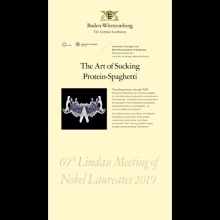Compartmentation or accessibility - an insurmountable contradiction?
Eukaryotes achieve their high performance by distributing their various functions on spatially membrane-bound subcellular compartments. By doing so, however, they are challenged by a severe problem: Subcellular confinement abolishes the principle of free intracellular accessibility for functional gain. Membranes represent a significant diffusion barrier for the majority of molecules in the cell which can only be overcome by a high energy input. Compartmentation or accessibility - an insurmountable contradiction?
To address this question we discussed the biological physics of how protein polymers thread through nanometer-scale pores. Single-particle cryo-electron microscopy has provided detailed insight into the molecular architecture of the mitochondrial preprotein import machinery TOM. The structure of TOM revealed a symmetrical dimer of ten membrane protein subunits that create a shallow funnel from the cytoplasmic membrane surface. In the Tom40 core of the dimer, two β-barrels form identical preprotein conduits. Each Tom40 pore is surrounded by the transmembrane segments of three α-helical subunits. Tom22, the central preprotein receptor, connects the two Tom40 pores at the dimer interface. Eventually, we focussed on experiments to visualize the protein translocation process through TOM using single-molecule techniques.


